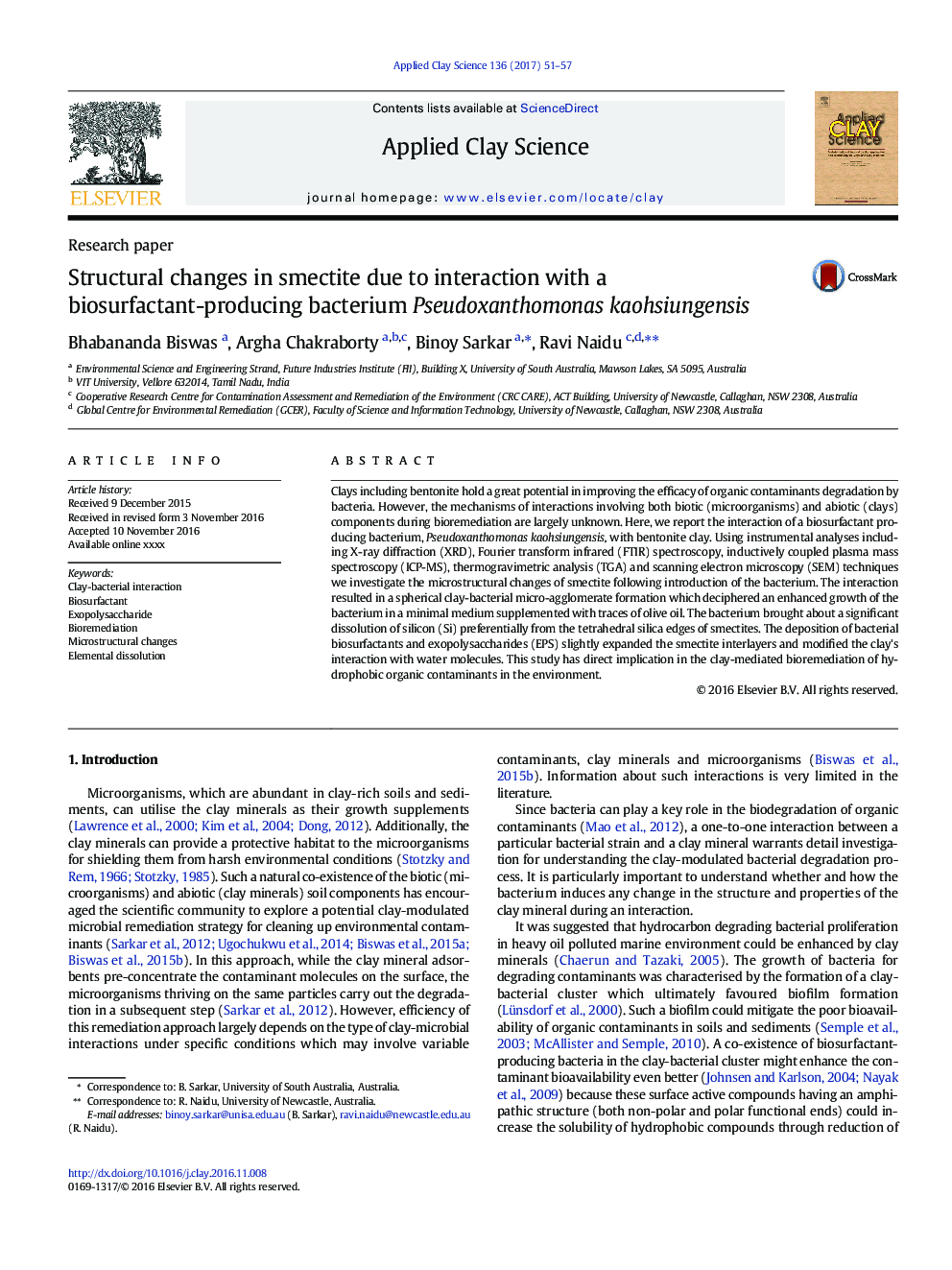| Article ID | Journal | Published Year | Pages | File Type |
|---|---|---|---|---|
| 5469097 | Applied Clay Science | 2017 | 7 Pages |
Abstract
Clays including bentonite hold a great potential in improving the efficacy of organic contaminants degradation by bacteria. However, the mechanisms of interactions involving both biotic (microorganisms) and abiotic (clays) components during bioremediation are largely unknown. Here, we report the interaction of a biosurfactant producing bacterium, Pseudoxanthomonas kaohsiungensis, with bentonite clay. Using instrumental analyses including X-ray diffraction (XRD), Fourier transform infrared (FTIR) spectroscopy, inductively coupled plasma mass spectroscopy (ICP-MS), thermogravimetric analysis (TGA) and scanning electron microscopy (SEM) techniques we investigate the microstructural changes of smectite following introduction of the bacterium. The interaction resulted in a spherical clay-bacterial micro-agglomerate formation which deciphered an enhanced growth of the bacterium in a minimal medium supplemented with traces of olive oil. The bacterium brought about a significant dissolution of silicon (Si) preferentially from the tetrahedral silica edges of smectites. The deposition of bacterial biosurfactants and exopolysaccharides (EPS) slightly expanded the smectite interlayers and modified the clay's interaction with water molecules. This study has direct implication in the clay-mediated bioremediation of hydrophobic organic contaminants in the environment.
Related Topics
Physical Sciences and Engineering
Earth and Planetary Sciences
Geochemistry and Petrology
Authors
Bhabananda Biswas, Argha Chakraborty, Binoy Sarkar, Ravi Naidu,
